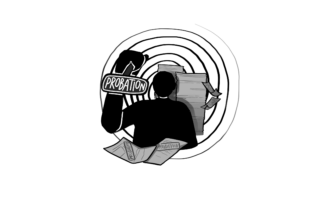
This editorial represents the majority opinion of 8 of 13 Outlook Editors.
On Wednesday, April 22, the Aragon faculty will vote on a “flex time” proposal to allow students more flexibility in getting help from teachers. While the proposal has its faults, all things considered, the faculty should vote to adopt this alternate system.
The proposal divides the Aragon student body into two tiers: tier one is for students with a maximum of one D or F, and tier two is for students with two or more D’s and F’s. Flex time would create built-in time into the school day for students to receive extra help if needed and give them the opportunity to get homework done before school is over.
With students taking more advanced classes, flex time will give students more time to review concepts with teachers and peers. As advanced classes tend to cover more material in a shorter amount of time, students are expected to review on their own time. Flex time builds review time into the schedule, leaving class time for new material. By moving some classroom minutes previously designated for reviewing material to this flex period, students wouldn’t be forced to review content that they already understand. Rather, they can spend this time more wisely reviewing content with a teacher from a different class they feel less confident in.
In addition, students would be able to work on group projects during the school day. As students have many extracurricular activities, it can be difficult to schedule enough time to properly design and execute a group project. With flex time, students can all participate in all factors of a group project.
It is possible that some students will not take full advantage of the flex time, using the flex period to “goof off” rather than work on schoolwork or seek help from faculty members. While this is surely a point to consider, the two-tier system makes sure that the students who receive the lowest grades—and therefore most likely need help with time management—do not have as much freedom to do what they would like during the flex period, and therefore are less able to “goof off.” Alternatively, students whose grades are above the tier 2 threshold and have a more successful academic record can more likely be trusted with the freedom that the proposal accords them. Thus, in a way, the two-tier aspect of the proposal limits the amount of “goofing off” that will occur while incentivizing strong academics.




8/12 editors is only 61.5%. The faculty needs a 2/3 majority in order for Flextime to pass.
Is the possible “goof off” problem the reason for the lack of unanimous support, or are there other reasons?
Is there any explanation for why the other four editors did not support this proposal?